DaLyah Jones didn’t think of herself as a movement journalist when she worked in public radio. But she had a feeling that her newsroom was failing to cover the communities that needed the most attention.
During her time at KUT in Austin, Texas, from 2016 to 2019, Jones said, she often pressed for more coverage of marginalized communities, including Black Austinites who were leaving the city’s historic side for rural and suburban areas. “I was covering everyday stuff, but I would try to push folks,” said Jones, who now works for the Texas Observer.
Yet she felt that her superiors didn’t share her priorities. Jones didn’t understand why she was running into resistance. That changed when she was introduced to a new concept — “movement journalism.”
Movement journalism aligns with goals of social change and liberation from oppression. Its proponents strive to work with underserved communities affected by injustice, particularly those of color.
Because it questions objectivity and other pillars of traditional reporting, movement journalism remains outside of the mainstream. But some journalists in public radio are finding that it can provide a valuable framework for deepening coverage of local issues. Meanwhile, Jones and others have chosen to leave public radio entirely to devote themselves to the principles of movement journalism.
During her time at KUT, Jones learned more about movement journalism when she got a Freedomways fellowship with Press On, a Southern media collective that aims to catalyze change and advance justice through the practice of movement journalism. The Freedomways program supports journalists and storytellers in the South.
Lewis Raven Wallace, co-founder and education program director of Press On, describes movement journalism as an alignment with community grassroots organizing and movements for social justice. For journalists, this means diversifying their sources and scope of reporting to encompass the realities of racial, classed and gendered oppression in society and making their journalism more collaborative and community-centered, rather than extractive.
Wallace said he believes that movement journalism holds promise for what public media could achieve through working with communities that have been left behind by corporate media. Harnessing this promise could be a valuable asset for journalists and communities alike.
“There’s been a lot of conflation with this idea that we are talking about advocacy journalism, or writing that always takes a stance. And I think that reporting always takes a stance,” he said. “Movement journalism is not so much taking a stance on a given issue — it’s about aligning with grassroots community organizing and movements for justice, trying to make things better, and recognizing that there are going to be debates within that. So it’s really about asking, how do we align ourselves and our ethical practices with communities and movements for justice?”
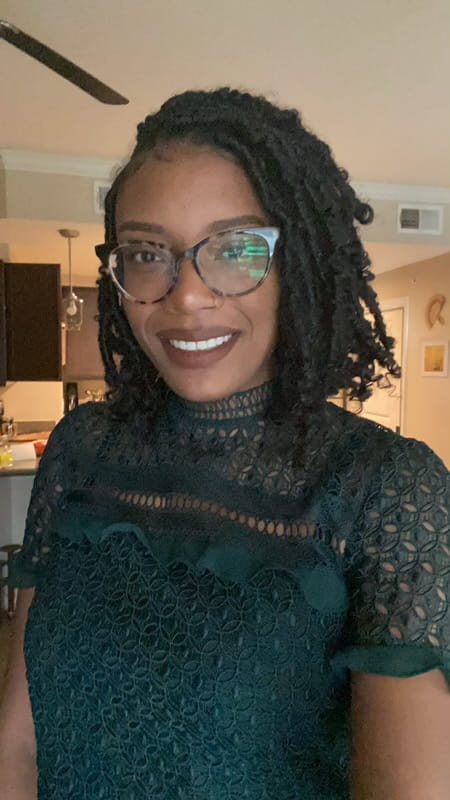
After receiving training in movement journalism, Jones tried to work on her investigative Freedomways project at KUT, focusing on wildfires in the rural community of Bastrop southeast of Austin. But she felt that the station wasn’t hospitable to her exploration of movement journalism.
This felt especially frustrating because of Jones’ background. “I’m a person who comes from a rural background, and I know and understand the importance of not having information, not being able to share it in a very succinct way, as well as what happens to a community when they don’t know much about their own community,” she said.
KUT was then grappling with internal dysfunction and a toxic newsroom culture that journalists of color pressed management to address. Jones said that she became burned out and disillusioned with public media.
Against the background of protests following the murder of George Floyd, Jones shared some of her experiences with racism at KUT in a Twitter thread. At the Texas Observer, she now runs a Google News–funded engagement initiative focused on communities of color across Texas, letting marginalized communities lead the way on what to report. While the Observer doesn’t explicitly endorse movement journalism, Jones said that she feels it’s more accepting of the practice.
The larger problem with public radio journalism, Jones said, is that reporters see themselves as “not a part of our communities.”
“I feel like we get this very hierarchical standpoint within journalism,” she said. “We think we are above the communities we report on and that’s what public radio is to me. … It’s very snobby. And if you don’t feel like the things you’re reporting on will affect you, then that’s coming from a place of privilege, for one. And also, you’re sadly mistaken.”
‘Neutrality is impossible for me’
The term “movement journalism” and the concept was formalized in a 2017 report by Project South, a Southern organization dedicated to cultivating strong social movements in the region. But Project South noted that a tradition of alternative media in the U.S. that seek to advance social movements goes back to at least 1827, when free African Americans in New York founded the newspaper Freedom’s Journal.
Movement journalism also has roots in Hispanic movements for emancipation (the first Hispanic-owned newspaper in the U.S., El Mensagero Luisianés, was established in 1909), Indigenous struggles (The Cherokee Phoenix, the first Indigenous newspaper, debuted a year after Freedom’s Journal) and labor movements in the 1820s (labor journalism gave a platform to unions and people fighting for better working conditions). The work of investigative journalist and anti-lynching activist Ida B. Wells also foreshadowed the development of movement journalism.
More recently, proponents of movement journalism have identified noncommercial radio as a potential seedbed for the practice. In its 2017 report, Project South pointed to low-power FM stations in the South as “a promising platform.” At the time, two Project South board members sat on the board of WRFG, a community radio station in Atlanta. The organization also had a relationship with WMXP, a low-power FM station in Greenville, N.C.
Since 2016, Project South has planned a news outlet for social justice coverage that would syndicate programs to community radio. It has yet to launch that platform, but as a first step, Project South has started working with more than 50 Black-owned noncommercial radio stations in the South. The Black Radio Project gives the stations technical assistance, informational spots and public service announcements, according to Angela Oliver, Project South’s communications coordinator. PSAs have covered topics such as COVID prevention, voting rights and the need for civic engagement beyond elections.
In addition, Project South is working on a database of experts to help producers in the network find diverse sources for stories. It is also organizing events to bring together DJs, artists and activists to strategize about movement building.
“The idea is to create a space for them to be able to strategize and help each other — how can radio help get the message out?” Oliver said. “How can activists provide content to the radio based on whatever work they’re doing at the time?”
While public media may offer a forum for movement journalism to grow, Wallace risked his job in the system to highlight the shortcomings of traditional newsgathering.
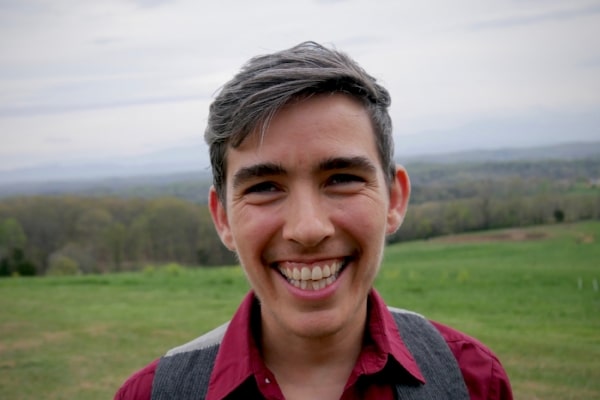
Shortly after President Trump’s inauguration, Wallace published a blog post titled “Objectivity is dead, and I’m okay with it.” In the post, Wallace reflected on his position as a white transgender journalist in public media — he was a reporter for Marketplace at the time — and pointed out journalistic objectivity’s failure to address the rise of “alternative facts.”
“Neutrality is impossible for me, and you should admit that it is for you, too,” Wallace wrote. “As a member of a marginalized community (I am transgender), I’ve never had the opportunity to pretend I can be ‘neutral.’ And right now, as norms of government shift toward a ‘post-fact’ framework, I’d argue that any journalist invested in factual reporting can no longer remain neutral.”
At the request of his Marketplace supervisors, who told him he had violated the show’s ethics code, Wallace took down the post. He was suspended for the rest of the week. On Friday of the same week, Wallace reconsidered his decision and told his bosses he would republish it.
“Part of what I wanted to highlight in that blog post was the kind of doublespeak around diversity that happens in public media, where there’s a lot of conversation about wanting more diversity or wanting to include people of color, wanting to include trans people, but a complete ban on advocating for yourself as a trans person or as a person or color,” Wallace said. “… I ended up going public with that story largely for the purpose of highlighting this contradiction.”
He learned the following Monday that he had been fired. Wallace publicly disclosed that he was dismissed for a blog post rejecting journalistic objectivity. He ultimately wrote a book on the myth of objectivity and co-founded Press On.
Public media journalists are in a unique position to do journalism differently from their corporate counterparts but refuse to for fear of seeming partisan, Wallace said.
“There is this idea that public media in particular serves the public and wants to represent a diverse public but refuses to stand up against racism and white supremacy because that might not be considered objective. And not only is that untenable, but it’s also not really in line with the original intent of public media,” he said. “The original intent was grounded in what you might now call a ‘media justice framework,’ of trying to counterbalance corporate monopoly in media and create platforms that would be able to represent folks who are underrepresented because of systemic exclusion.”
In his book The View From Somewhere: Undoing the Myth of Journalistic Objectivity, Wallace challenges traditional approaches to journalism that fail to recognize the context of oppression and racial hatred in the U.S. He argues that the conversation about objectivity cracks open uncomfortable truths about how journalists practice cultural dominance in newsrooms.
“You cannot have a successful career in public media as somebody who publicly takes a stance on racial hostility or publicly takes a stance on patriarchy or abuse, and that is obviously messed up at a moral level,” Wallace said. “But it also creates this just ridiculous conundrum for the efforts in public media to be more representative and to be more driven by the public.”
During the protests that followed the killing of George Floyd, some public media organizations made clear to their employees that they could take a stance on racial injustice on their social media accounts. That may indicate change in some newsrooms, but Wallace also advocates for challenging the very concept of objectivity in journalism.
“To me, the conversation about objectivity is just a wedge conversation that opens all these other issues that are really about cultural white supremacy, and cultural racism, and cultural dominance, and oppression in these spaces,” he said. “But we really can’t have an honest conversation about oppression if we are still attached to the myth that it’s possible to be neutral, so it comes out over and over, every single time.”
While Wallace was working on The View From Somewhere, he met Ramona Martinez, who at the time was working as a producer for the podcast BackStory. During a conversation about journalism, Martinez said something that stuck with Wallace: “Objectivity is the ideology of the status quo.”
Two years later, Martinez started producing Wallace’s podcast about the history of movement journalism, also titled The View From Somewhere. In the first episode, Martinez explained her assertion about objectivity: “… What is considered objective or neutral is really only a matter of social agreement, or the ideological consensus of the majority or the status quo.”
Martinez told Current that her perspective on the myth of neutrality stems in part from her experience as an associate producer at NPR from 2012 to 2016, where she came to see the tradition of journalistic objectivity as an obstacle to news coverage. Much like Wallace, Martinez said, she believes that her colleagues’ investment in neutrality didn’t leave space for honest conversations about race and power.
“Younger journalists are being courageous about speaking up about how race and power are affecting journalistic coverage,” she said. “But I don’t have a lot of faith that the people in power are going to be able to divorce themselves from these ideas, which to them is the foundation of being a good journalist. And movement journalism is a completely different way of perceiving journalism.”
‘This process is never finished’
For some public media reporters and organizations, the alternative lens of movement journalism points to a potential new way forward. These outlets have started to explore ideas within movement journalism and have adopted antiracist stances.
Stations have contacted Wallace’s Press On to learn more about movement journalism and “talk about oppression through an intersectional lens,” he said. A workshop Wallace offers through Press On uses “popular education” techniques that aim to teach participants how individuals’ personal experiences are connected to larger societal problems. Titled “Transforming Journalism: Beyond Diversity,” the workshop contextualizes power dynamics in newsrooms around the history of racism and oppression in the U.S.
KUOW in Seattle is among the stations that have contacted Wallace. The Press On workshop was one of 19 sessions KUOW organized “to better understand how to invite communities into our coverage as content collaborators, challenge notions of traditional journalistic objectivity, identify who is not represented in our coverage, and understand the role media must play in dismantling systemic racism,” said CCO Jennifer Strachan.
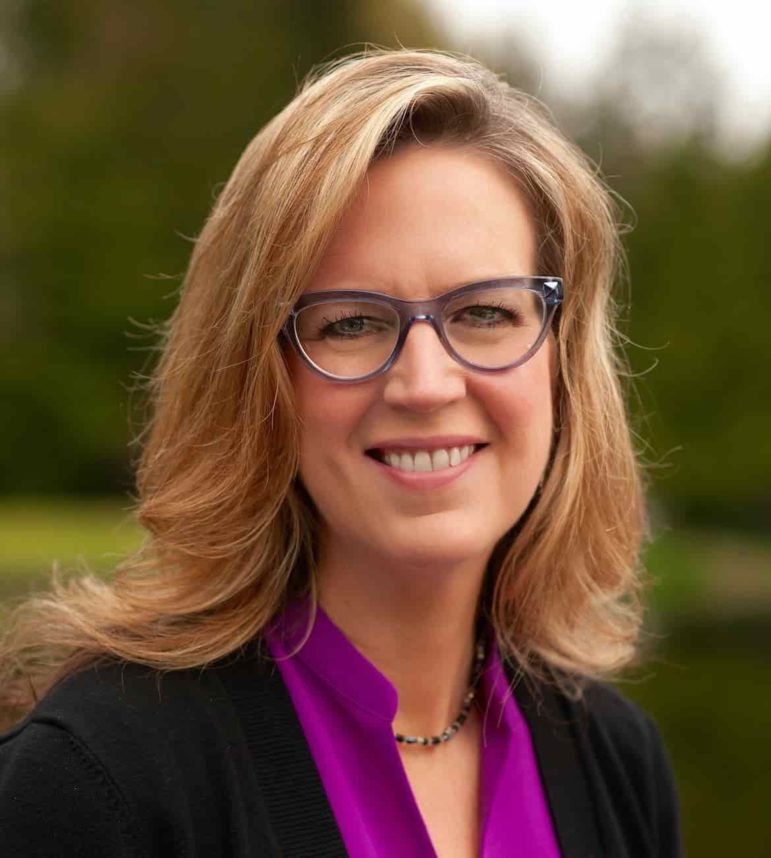
All staffers were required to attend the sessions. Strachan estimates that around 80 to 100 participated in the Press On workshop.
“Our speaker series is one component of a vast, multiyear initiative to transform KUOW into an antiracist organization,” Strachan said. “We do believe this work is changing our journalism for the better and also that this process is never finished.”
Strachan said she found that KUOW’s journalism already aligned with many concepts shared in the Press On workshop. “We’ve embraced the concept that journalism has a role to play in amplifying underrepresented voices in our community and challenging narratives that normalize systemic racism,” Strachan said. “This is difficult work, and we’re grappling with how best to change how we work while also maintaining the journalistic standards and ethics that maintain our audience’s trust.”
Additionally, KUOW is tracking source diversity, setting goals to make both the newsroom and its content more diverse, and creating processes “to attract, hire and retain a diverse staff at all levels,” Strachan said. It is also developing a “narrative screening” document with questions that prompt KUOW journalists to ground their reporting in the context of systemic racism and to center the voices of communities of color when seeking sources.
“Over time, we aspire for the screen to be used by editors in their meetings with reporters at the early stages of story development,” Stratchan said. “This will be a new process for us, and we imagine we’ll iterate over time. We’re just beginning the work to consider it as part of our regular editorial process.”
“We’re also continuing to develop new processes for staff and our community to provide feedback, surface concerns and share their perspectives on how we can do better,” Strachan added.
Seeking diversity in Yellow Springs
Press On’s Wallace also cited WYSO in Yellow Springs, Ohio, as a public media outlet that has undertaken positive antiracist work. The station, where Wallace used to work as a reporter, doesn’t explicitly embrace movement journalism, Wallace said, but its strategic and public plan to transform into an antiracist organization intersects with central tenets of journalism aligned with social justice movements.
WYSO GM Luke Dennis said the station has centered its guiding principles on amplifying community voices and a diversity policy that extends to the newsroom and beyond.
“We believe our role today is to provide a platform for voices and perspectives that have historically been underrepresented on our airwaves,” Dennis said. “Doing this work well, with dignity and respect, is one of the essential first steps toward becoming an antiracist organization. We want to transform WYSO into an antiracist organization. We certainly aren’t there yet. But moving forward, this work is prioritized and enshrined in all our strategic planning.”
Much of WYSO’s current approach to journalism is both locally driven and in collaboration with communities that previously had no space in local media. In the last year, WYSO has doubled the size of its newsroom and launched a Center for Community Voices, where community members are trained in radio production with the goal of encouraging collaboration with the station.
Members of the community, including veterans, high-school students and undocumented immigrants, gain skills like interviewing, editing and reporting and put them to use in their stories. This openness to diverse voices has allowed series like ReEntry, a project that explores the stories of previously incarcerated people re-entering society, and The Bind That Ties, a series of immigrant stories, to flourish at WYSO.
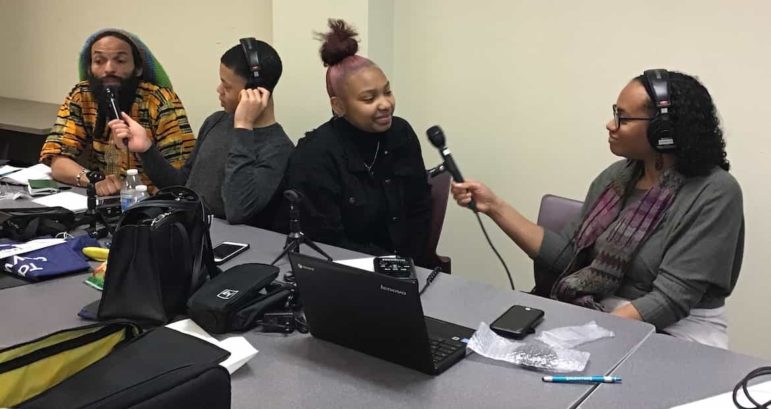
“When Black, Indigenous and people of color and other historically underrepresented groups hear themselves reflected in the stories that we share, that will build a more diverse audience for WYSO,” Dennis said. “Our mandate is to serve the public, and that includes everyone who lives in our listening area. We currently serve a fairly narrow slice of this community. I want to be ‘the people’s radio station,’ and that means not just some people.”
According to Nielsen Media Research, 88% of WYSO’s listeners identify as white, and the majority of listeners are over 45 years old. Most also live in the county where Dayton is located, “so we aren’t adequately serving the rural parts of our 13-county listening area,” Dennis said.
“Most have a household income that is higher than the median income for our metropolitan statistical area,” he said. “The census data for our region paints a picture of a more diverse community. We want our staff, programs and audience to be more reflective of this specific community. That’s why we are now using census data to set long-term goals around staff and listener demographics.”
“It’s worth noting that our listener data aligns in many ways with the annual NPR Listener Profile, which is to say that as a system, public radio is serving a fairly narrow slice of the country,” he adds. “This is not new information and won’t surprise anyone.”
WYSO’s antiracist plan also calls for shifting most of the station’s funding from sources that could compromise journalistic freedom. The goal is to be 90% funded by local listeners and businesses, seeking both to strengthen ties to the community and to free the newsroom from political binds. The station now derives 78% of its budget from those sources.
“If that large a percentage of our funding comes from local sources, then no matter what happens with the CPB subsidy, with state grants or with events revenue, we will be able to continue serving our local community without interruption,” Dennis said. “Is it important for local public radio stations to have local funding? Yes! It’s a litmus test for whether your local community values your service, and it protects you from the silliness and BS that happens in Congress, with the federal subsidy seemingly always on the chopping block.”
Centering the community
Short of a station pursuing principles of movement journalism throughout the organization, individual reporters can also seek to learn from the practice. Ambriehl Crutchfield, a reporter for Nashville Public Radio, said that she learned about movement journalism only recently. But through her reporting, she hopes to reach people who don’t usually care about local government and make them aware of how they could effect change in the community.
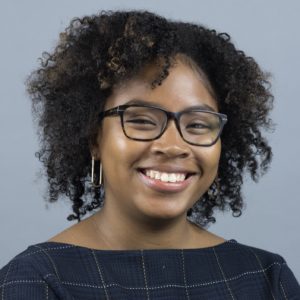
As the station’s metro reporter, Crutchfield is shifting her beat to a more community-centered approach, informed by residents’ questions about local government and how it works. She said that her focus comes from her own experience of not fully understanding how local policy affected her and her community.
“I do see my role as giving people the tools of being able to advocate for themselves through reporting on how the system works,” she said. “And when I think about it, I think this work does overlap with liberation. I think that’s the same question of, what tools can we expose to show you how you do the work of getting whatever aim you’re trying to get?”
“I don’t know if I would label myself a capital-M movement journalist, but I feel like I try to embody movement journalism in my work,” she said. “I always try to bring in the history of how we got here and some ideas of what the solutions are.”
Crutchfield recently reported on the lack of diverse representation on Nashville’s boards and commissions. Instead of focusing solely on the conflict over a single seat that people wanted to fill with a Hispanic representative, Crutchfield took a deeper dive into the broader issue of representation in Nashville’s government.
“While we’re fighting about this very particular seat, there are enough seats for everyone in Nashville to be represented,” she said. “What was suggested is that we might have to look at revising the process to make sure the equity is built in. I wanted to call out these people who are making the decisions of who gets in these seats and report on why it works this way. I wanted to help people understand a broader issue, because I know that there are people in the community who are already working to try to get more people that are diverse into those positions.”
Crutchfield said that Nashville Public Radio’s leadership has supported her approaches to reporting, even when she pushed back on long-held practices such as attending most public government meetings.
“I was able to say ‘I don’t know if it’s beneficial for me to sit in on an eight-hour meeting when I could be spending that time doing X, Y and Z,’ and they said, ‘Let’s talk about that and get a feel for that,’” she said. She has sat out some city council meetings with less pressing agendas to focus on interviewing residents about local government instead.
Nashville Public Radio is also adopting Hearken to gather questions from the community, which Crutchfield will review. She plans to reach out to groups within Nashville to teach them about how to use the Hearken platform.
For Crutchfield, discussing changes to her beat involves her editors understanding the responsibility of being a Black woman with the power of reporting stories that could change the local community.
“I’m really glad that I’m able to have these conversations openly with my bosses,” she said. “My editors are white, and I think that they can somewhat grasp the responsibility of being the person of color in the room. For people of color, there’s a different collective responsibility that we feel, and I think that that fuels a lot of us as we do our work.”
Crutchfield acknowledged that some journalists might be wary of movement journalism because it can be seen as activism. But she noted that her editors encourage her to center the community in her work, which overlaps with movement journalism. “It’s a weird toggle, putting a label to it,” she said.
Wallace of Press On affirmed that many public media journalists are engaging with the ideas of movement journalism and attending his organization’s events all over the country, even if they don’t explicitly call themselves movement journalists due to fears of losing their jobs.
“I think there is a delightful number of people in public media who want to do that work,” Wallace said. “But a lot of them have bosses who don’t want them to.”
"current" - Google News
May 20, 2021 at 08:00PM
https://ift.tt/3ym7MK5
How journalists are challenging ideas of objectivity while empowering their communities - Current
"current" - Google News
https://ift.tt/3b2HZto
https://ift.tt/3c3RoCk
Bagikan Berita Ini














0 Response to "How journalists are challenging ideas of objectivity while empowering their communities - Current"
Post a Comment